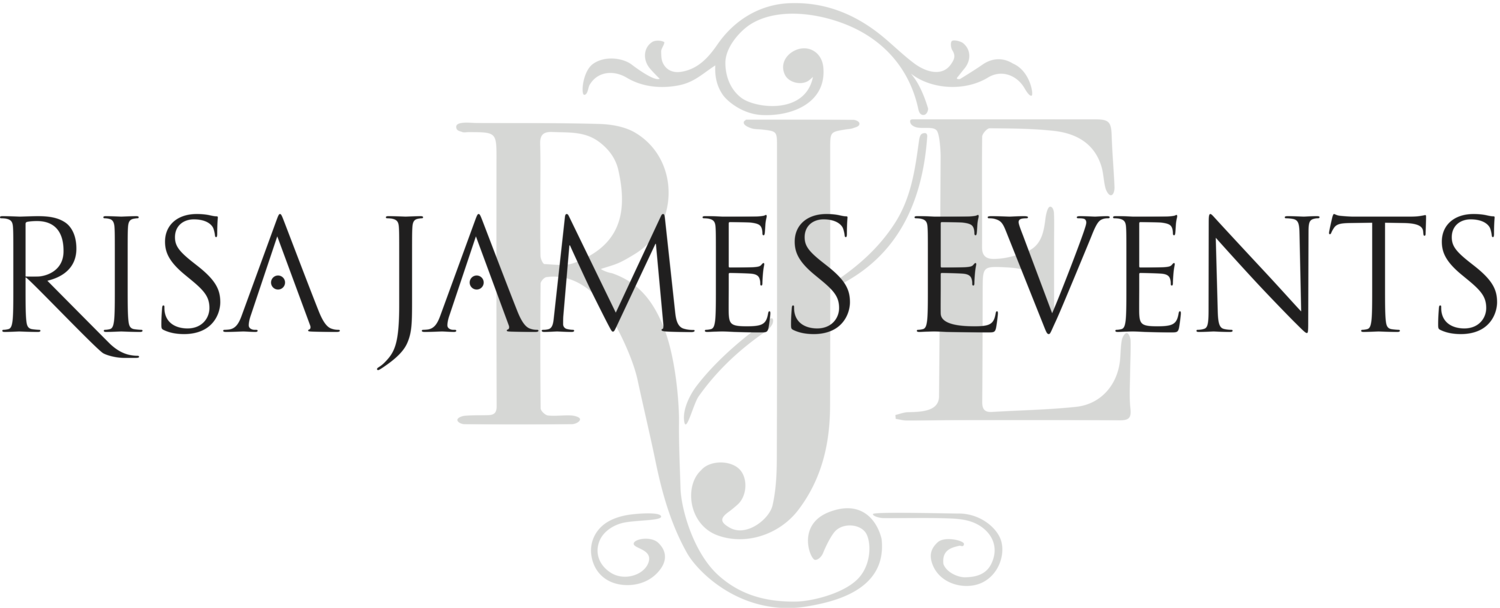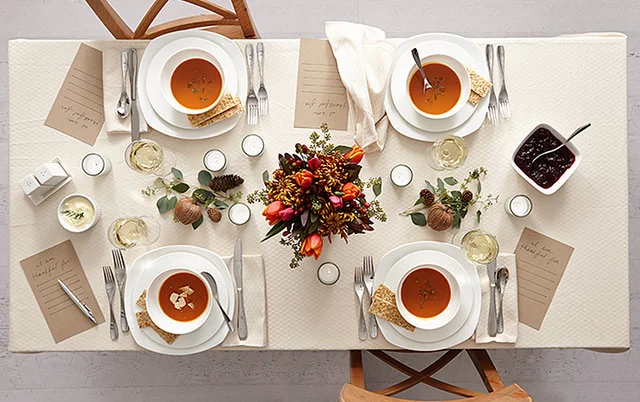In this go-go age when people are glued to their phones while scarfing down something they grabbed from a local food truck, and when seemingly every new restaurant embraces the quasi-fast-food “order at the front and we’ll bring your food to you” business model, etiquette and table manners have fallen by the wayside. But no matter how casual your everyday life, there will undoubtedly come a time when you need to know how to dine like a lady or gentleman. This guide will help you navigate even the most formal of events.
Napkins
Upon sitting, you should immediately remove the cloth napkin from your place setting, unfold it, and place it across your lap. When you leave the table, you should fold your napkin and place it on your chair, not the table. If you happen to be dining in a dark cocktail dress or suit and the napkins are white, you should feel free to request a black napkin, to minimize lint on your clothes, but not all establishments will be able to accommodate your request.
Which Fork?
Formal events, such as weddings, call for formal place settings, which involve many more pieces of flatware than you encounter on a daily basis. The exact number and type depends on how many courses are being served and what those courses are. For example, if there will be no soup course, there is no need for a soup spoon.
A good general rule of thumb is to start with the outermost utensil and work your way in as the meal progresses. This assumes, of course, that the table has been laid by competent waitstaff. Another good general rule of thumb is to start with the smaller utensils first and work your way up to the larger ones.
For example, the salad fork is generally smaller than the fish fork, which is smaller than the dinner fork. The same goes for the corresponding knives. If you sit down to your place and see two forks to the left of your plate, and two knives to the right of your plate, you will use the smaller fork and knife for whatever is served to you first. With luck, that will also be the outermost fork and knife, so you can be absolutely confident in your choice. The same rules apply if you sit down and see five forks and knives at your place.
Usually your bread plate will have a small butter knife positioned on it. Use this knife only for butter! If you see a fork and spoon at the top of your dinner plate, those are intended to be used for dessert. And if you see a little tiny fork that looks like it was meant for a child, some sort of seafood is going to be served, for which you should use this fork.
Is this your water or mine?
Have you ever sat down at a table set with so many place settings you have no idea which bread plate and water glass are yours? Fear not, there’s a foolproof way out of this conundrum.
Hold your hands in front of you with your palms facing each other. Touch each forefinger to its adjacent thumb, forming a circle with the forefinger and thumb and keeping the other three fingers on each hand upright. You will notice that your left hand forms the letter “b” and your right hand forms the letter “d.” This is your cheat sheet for figuring out which bread plate and water glass are yours and which are your neighbor’s. The “b” is your left hand, so use the bread plate on your left. The “d” is your right hand, so drink out of the water glass on your right.
Keep this in mind at your next formal dinner and you’ll never again have to apologize for accidentally appropriating your neighbor’s water. And if someone else at the table throws everything into chaos by using the wrong plate, you can teach everyone your technique.
Buttering bread
At almost any meal, whether at a formal event like a wedding or just lunch at a restaurant, you are likely to encounter bread. And chances are you will be given butter to go on that bread. You may not even realize it, but there is a right way and a wrong way to butter your bread. Unfortunately, the wrong way is very prevalent among today’s diners. They pick up the piece of bread, scoop up some butter with their knife, and proceed to butter the entire piece of bread. Then they bite into the buttered bread.
The proper way to approach this task is to use your knife–your bread knife, of course–to scoop a small amount of butter out of the dish and place it on the side of your bread plate. Then, you tear off a small piece of bread and use your knife to butter just that piece. Once buttered, the entire piece goes into your mouth at once, no biting required.
Pouring wine
On the off chance that you will have a reason to pour your own wine, you should keep in mind that a wine glass should never be filled to the top, or anywhere near the top. If you are attending a very wine-focused event where varietal-specific stemware is being used, the glass should be filled to the widest part of the bowl to accentuate the bouquet. It is far more likely, however, that the venue uses generic wine glasses, in which case you should fill the glass approximately halfway.
Technology at the table
Since the dawn of the iPhone, all the way back in 2007, it seems that no one under 30, and even many people over 30, can get through an entire meal without using their smartphone. While some would prefer to altogether ban the devices from the table, they can be useful, when used politely and minimally.
A new wedding trend is to create a hashtag celebrating the couple so that attendees can post photos with the hashtag, and then others can easily find the photos. Obviously this requires the use of your smartphone during the event. So it would be acceptable to use your phone to take a photo and then post that photo. What would not be acceptable is to then spend the next 15 minutes scrolling through your social networks to read and see what everyone in your circle is doing. You are at a live social event–be social in real life!
Smartphones are also great for settling pop culture debates. If your tablemates insist that Jurassic Park came out in 1995, and you know it was 1993, a quick check of IMDb can set everyone straight. But again, the proper approach is to pull out your phone for the task at hand and then promptly put it away again.
If you have the kind of job that requires you to be available around the clock with no exceptions, then excuse yourself from the table and go to an inobtrusive spot to check your email or your voicemail. Furthermore, try to limit yourself to doing this once per hour, at most.
Miscellany
Lastly, remember all those things your mother used to tell you when you were a kid: sit up straight, keep your elbows off the table, chew with your mouth closed, don’t talk with food in your mouth, and don’t stare at your plate while you eat. Follow these tips, and you’ll make your mother proud. More important, you'll always be invited back!

